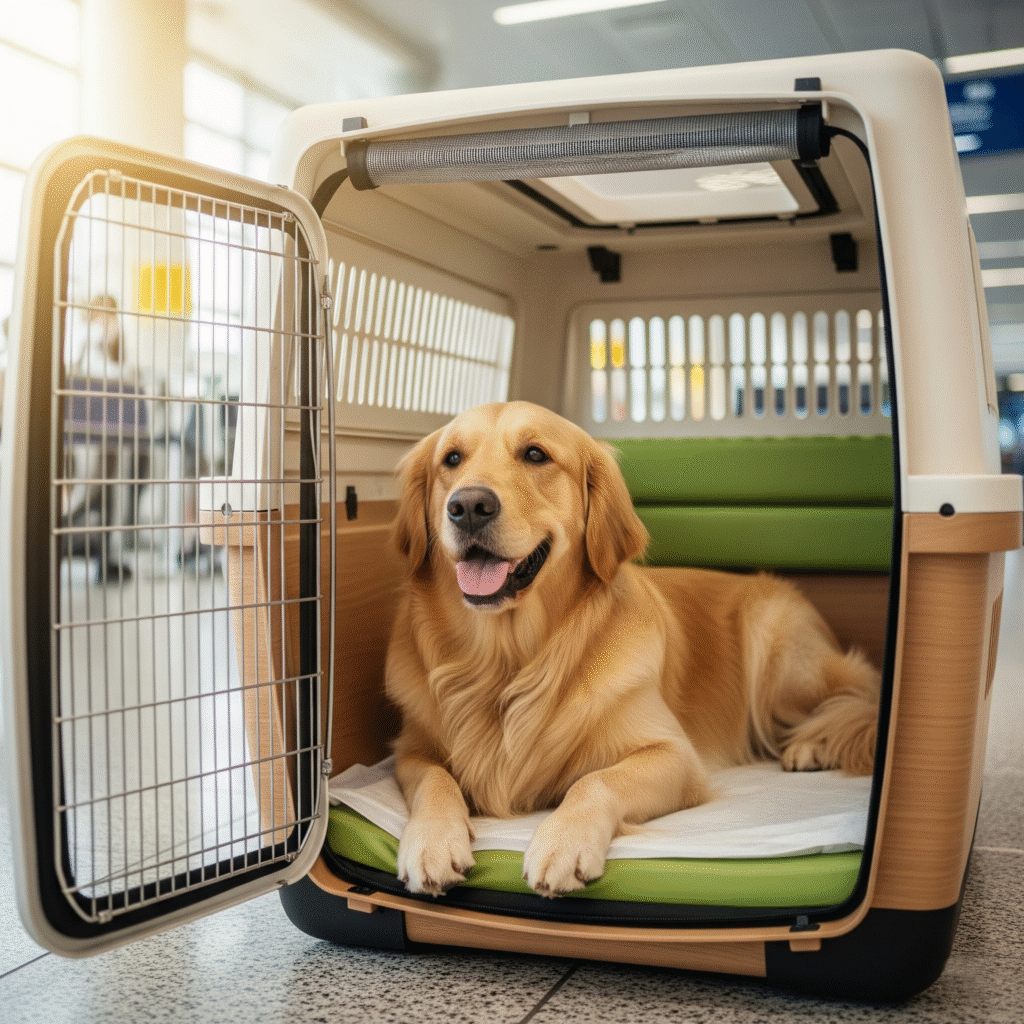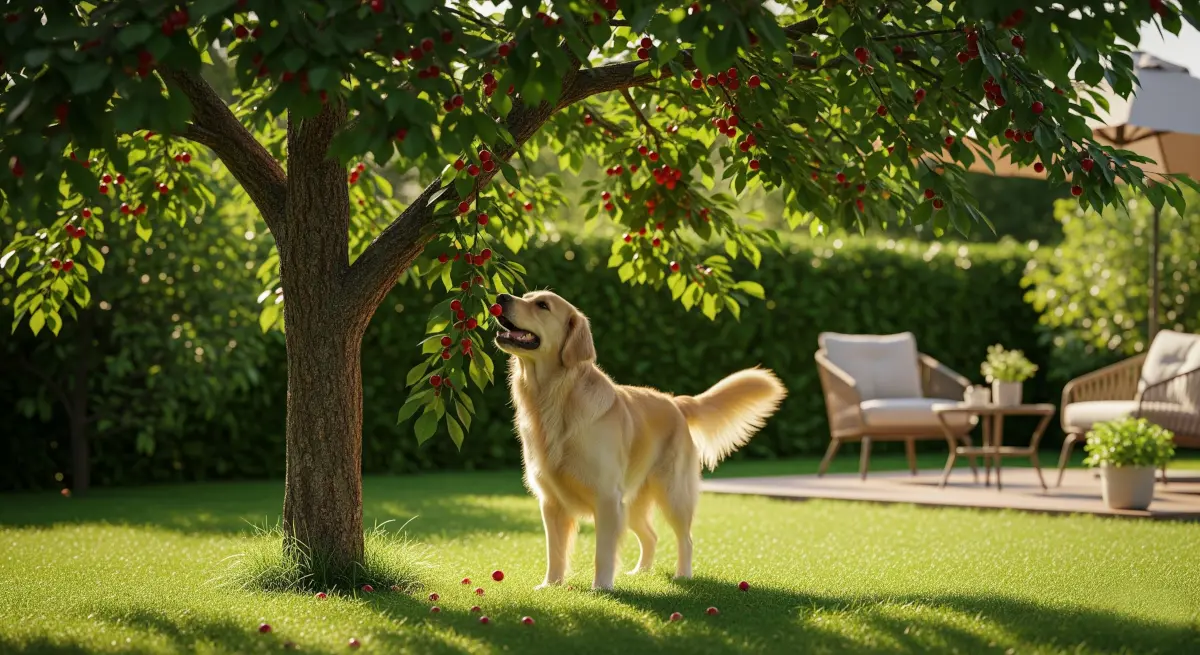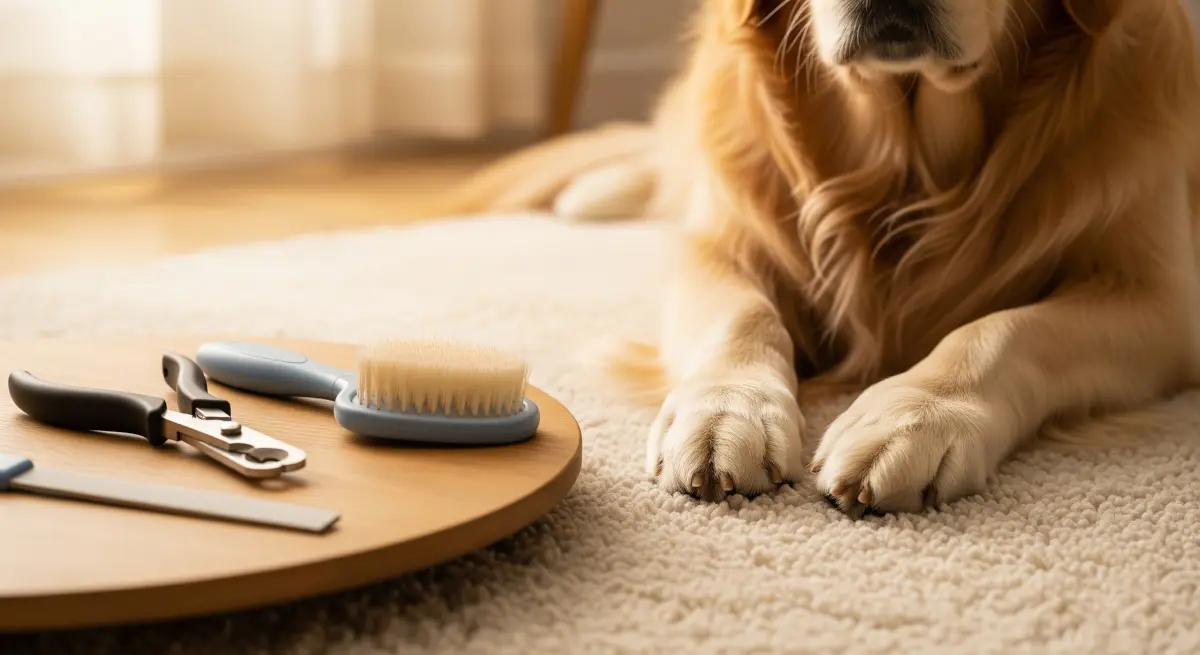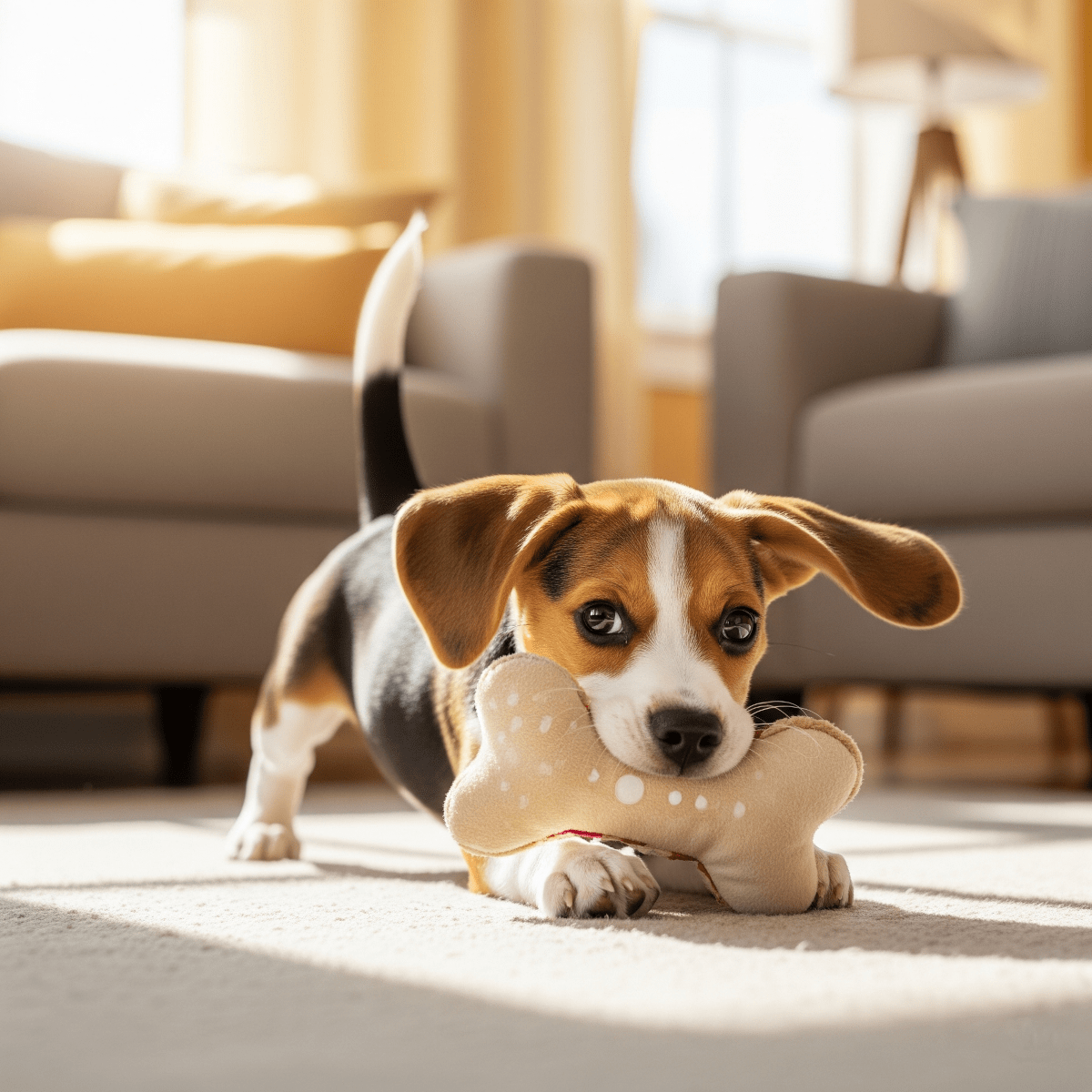What size crate for golden retriever is one of the most crucial decisions you’ll make as a pet parent. Getting this wrong could leave your furry friend cramped, stressed, or even injured during travel. With Golden Retrievers weighing between 55-75 pounds and measuring 21-24 inches tall, choosing the wrong crate size affects their comfort, safety, and overall well-being.
In this comprehensive guide, you’ll discover the exact measurements needed for your Golden Retriever at every life stage, learn how to avoid common sizing mistakes that cost pet owners hundreds of dollars, and understand why proper crate sizing is essential for your dog’s physical and mental health. We’ll walk you through measuring techniques, growth considerations, and expert recommendations that will transform travel time from stressful to comfortable for both you and your beloved companion.
Table of Contents
- Understanding Golden Retriever Dimensions
- Ideal Crate Size Specifications
- Puppy to Adult Sizing Guide
- How to Measure Your Golden Retriever
- Problems with Wrong Sizing
- Crate Types and Features
- Frequently Asked Questions
Understanding Golden Retriever Dimensions
Golden Retrievers are medium to large-sized dogs with specific physical characteristics that directly impact crate selection. Understanding these dimensions is fundamental when determining what size dog crate for golden retriever you need.
When selecting dog essentials for your Golden Retriever, proper crate sizing stands as one of the most important decisions you’ll make. Adult Golden Retrievers typically measure 21-24 inches in height at the shoulder (withers) and 22-26 inches in length from chest to rear. Their weight ranges from 55-75 pounds, with males generally being larger than females. However, these measurements can vary based on genetics, diet, and exercise habits.
Remember that their thick double coat adds to their overall bulk, especially during colder months when the coat is at its fullest. This natural insulation layer requires additional space considerations that many pet owners overlook.
The breed’s athletic build and friendly temperament mean they’re often active even in confined spaces. This makes proper sizing even more critical, as cramped conditions can lead to anxiety and destructive behaviors that contradict their naturally calm disposition.
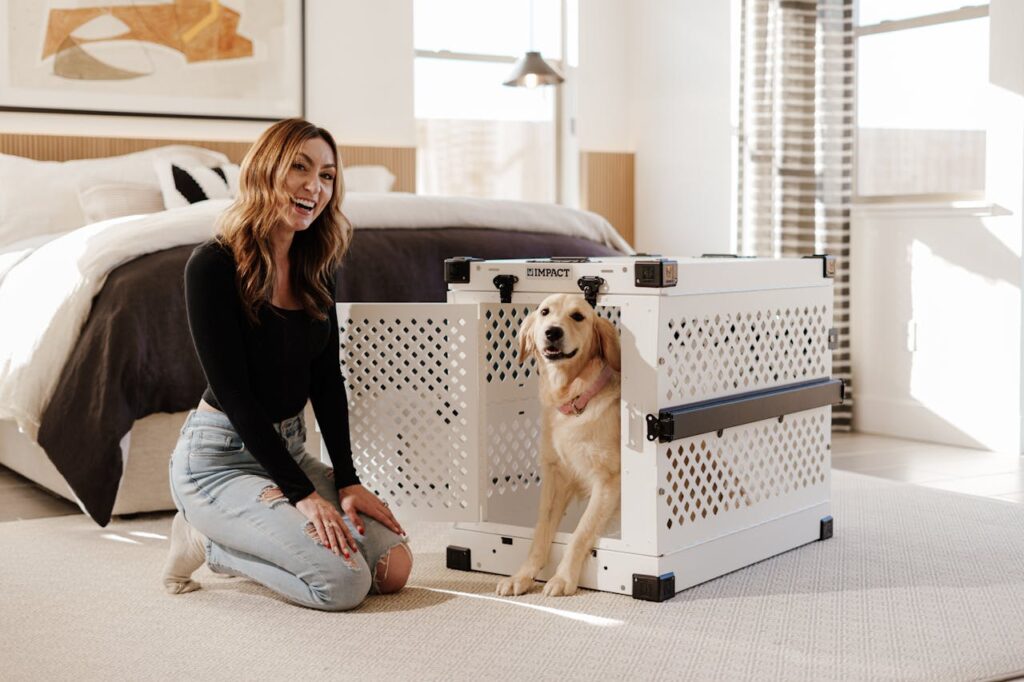
Ideal Crate Size Specifications
What size crate for golden retriever depends on providing adequate space for natural movements while maintaining security. The ideal crate should allow your dog to stand up fully, turn around comfortably, and lie down with legs extended.
For adult Golden Retrievers, a 42-inch long crate is typically the minimum recommended size. However, many experts suggest a 48-inch crate for optimal comfort. The internal dimensions should be approximately:
- Length: 42-48 inches
- Width: 28-30 inches
- Height: 30-32 inches
These dimensions accommodate the average Golden Retriever’s body proportions while providing room for comfortable positioning. Remember that airline regulations may have different requirements, so always check specific carrier policies before traveling.
The extra space in a 48-inch crate allows for bedding, toys, and water bowls without cramping your dog’s movement area. This size also accommodates larger Golden Retrievers who may exceed typical breed standards, ensuring long-term usability as your dog matures.
Puppy to Adult Sizing Guide
Golden Retriever puppies grow rapidly, reaching adult size between 12-18 months. Planning for this growth prevents the need for multiple crate purchases and ensures consistent training environments that support your dog’s development.
8-16 Weeks (Puppy Stage)
Young puppies can start with a smaller section of an adult-sized crate using dividers. A 30-inch section within a 48-inch crate works well, preventing accidents while house-training. The puppy should have just enough room to stand, turn, and lie down without excess space that might encourage elimination in the sleeping area.
4-8 Months (Adolescent Stage)
As your Golden Retriever grows, gradually expand the available space by adjusting dividers. Monitor their size weekly and increase crate space accordingly. Most Golden Retrievers will need 36-42 inches of length during this phase, with their rapid growth requiring frequent adjustments.
8-18 Months (Near Adult)
Remove dividers completely once your Golden Retriever approaches adult size. By 12 months, most dogs can use the full 48-inch crate comfortably. Some may reach full size earlier, while others continue growing until 18 months, particularly males who tend to mature more slowly.
Investing in an adjustable crate system saves money long-term and provides consistency for your developing dog. Many crate manufacturers offer divider panels specifically for this purpose, making the transition seamless as your puppy grows.
How to Measure Your Golden Retriever
Accurate measurements ensure you select the correct crate size. Measure your Golden Retriever when they’re calm and standing naturally in their normal posture, preferably after exercise when they’re relaxed but alert.
Length Measurement
Measure from the tip of the nose to the base of the tail (not including tail length). Add 2-4 inches to this measurement for comfortable crate length. This accounts for natural stretching and positioning preferences that Golden Retrievers exhibit during rest.
Height Measurement
Measure from the floor to the top of your dog’s head or ears (whichever is higher) when standing normally. Add 2-3 inches for adequate headroom. Golden Retrievers should be able to sit up without their head touching the crate top, allowing for comfortable movement and reducing stress.
Width Consideration
While width is rarely an issue for Golden Retrievers in appropriately sized crates, ensure your dog can turn around comfortably. The crate should be wide enough for your dog to lie on their side with legs extended, particularly important for this breed’s sleeping preferences.
Take measurements at different times, as dogs may carry themselves differently when alert versus relaxed. Use the largest measurements to ensure comfort in all situations, and remember that Golden Retrievers’ fluffy coats can add several inches to their effective size.
Problems with Wrong Sizing
Incorrectly sized crates create serious problems affecting your Golden Retriever’s physical and mental well-being. Understanding these issues helps emphasize the importance of proper sizing and the long-term consequences of poor decisions.
Too Small Crates
Undersized crates cause immediate discomfort and long-term health issues. Your Golden Retriever may develop joint problems from inability to stretch properly, experience increased anxiety, and show reluctance to enter the crate. This is particularly problematic for a breed prone to hip and elbow dysplasia.
Cramped conditions can lead to aggressive behaviors, excessive panting from stress, and difficulty regulating body temperature. Golden Retrievers are naturally friendly dogs, but confinement stress can alter their temperament significantly, creating behavioral issues that extend beyond crate time.
Oversized Crates
While less common, overly large crates present safety risks during transport. Your dog may be thrown around during sudden stops or turbulence, potentially causing injuries that could be severe. Additionally, very large crates may defeat house-training purposes for puppies by providing too much space.
Oversized crates also take up unnecessary space in vehicles and homes while costing more than needed. The goal is finding the sweet spot between comfort and security that serves your dog’s actual needs.
Signs of Poor Fit
Watch for reluctance to enter the crate, excessive panting or drooling, difficulty changing positions, and signs of anxiety or stress. These indicators suggest immediate sizing adjustments are necessary to prevent long-term behavioral and health problems.
Crate Types and Features for Golden Retrievers
Different crate styles offer varying benefits for Golden Retriever owners. Understanding these options helps you choose the best type for your specific needs and lifestyle while ensuring your dog’s comfort and safety.
Wire Crates
Wire crates provide excellent ventilation and visibility, making them ideal for anxious Golden Retrievers who prefer seeing their surroundings. They’re typically collapsible for easy storage and transport, offering convenience for pet owners with limited space.
Most wire crates come with divider panels, making them perfect for growing puppies. The open design helps with air circulation, important for Golden Retrievers’ thick coats and tendency to overheat in enclosed spaces.
Plastic Airline-Approved Crates
Hard-sided plastic crates meet airline requirements and provide a den-like environment that many dogs find comforting. They offer better protection during transport but may have less ventilation than wire options, requiring careful consideration for Golden Retrievers’ temperature regulation needs.
These crates are essential for air travel and provide excellent security during car transport. However, they’re bulkier to store when not in use and may not be suitable for dogs who prefer open environments.
Soft-Sided Crates
Lightweight and portable, soft-sided crates work well for well-trained Golden Retrievers who won’t attempt to escape. They’re ideal for indoor use and short trips but not suitable for heavy chewers or escape artists, which can be a concern with this intelligent breed.
Consider your Golden Retriever’s temperament and intended use when selecting crate type. Active or anxious dogs may need sturdier options, while calm, well-trained dogs can use lighter alternatives that offer greater portability and convenience.
Frequently Asked Questions
What size crate do I need for a Golden Retriever puppy?
For Golden Retriever puppies, start with a 48-inch crate using dividers to create a smaller space initially. Begin with about 30 inches of usable space for 8-12 week old puppies, gradually expanding as they grow. This approach eliminates the need to buy multiple crates while supporting proper house-training habits.
Can a 42-inch crate work for an adult Golden Retriever?
A 42-inch crate can work for smaller adult Golden Retrievers, but a 48-inch crate is generally recommended for optimal comfort. Measure your specific dog rather than relying on breed averages, as individual Golden Retrievers vary significantly in size. The extra 6 inches in a 48-inch crate provides noticeably more comfort for most adults.
What’s the difference between airline and car travel crate requirements?
Airline crates must meet International Air Transport Association (IATA) standards, typically requiring hard-sided construction with specific ventilation requirements. Car travel allows more flexibility with wire or soft-sided crates. Always check specific airline policies, as requirements vary between carriers and may be more restrictive than IATA minimums.
How do I know if my Golden Retriever’s crate is too small?
Signs of a too-small crate include reluctance to enter, inability to stand fully upright, difficulty turning around, excessive panting or stress behaviors, and hunched positioning when lying down. Your Golden Retriever should be able to stand, sit, turn around, and lie down with legs extended comfortably.
Should I buy a crate with dividers for my Golden Retriever?
Yes, dividers are highly recommended, especially if you’re getting a puppy. They allow you to adjust the usable space as your Golden Retriever grows, supporting house-training while providing a lifetime crate solution. Many quality crates include dividers, making them an excellent investment for growing dogs.
What features should I look for in a Golden Retriever crate?
Look for sturdy construction that can handle a 55-75 pound dog, secure latching mechanisms, adequate ventilation, removable/washable floor trays, and appropriate size (typically 48 inches for adults). For travel, ensure the crate meets relevant transportation standards and fits in your vehicle with adequate clearance.
Conclusion
Selecting the right crate size for your Golden Retriever is a critical decision that impacts their comfort, safety, and well-being throughout their life. A 48-inch crate typically provides the ideal balance of space and security for most adult Golden Retrievers, while adjustable dividers make it suitable from puppyhood through adulthood.
Remember to measure your individual dog rather than relying solely on breed standards, as Golden Retrievers can vary significantly in size. Consider your specific needs – whether for house training, travel, or general containment – when selecting crate features and materials that will serve your dog best.
The investment in a properly sized, quality crate pays dividends in your dog’s comfort and your peace of mind. Take time to research options, read reviews, and choose a crate that will serve your Golden Retriever well for years to come. Your furry friend’s happiness and security depend on this important decision.
By following the guidelines in this comprehensive guide, you’ll ensure your Golden Retriever has a safe, comfortable space that supports their physical and emotional well-being. A well-chosen crate becomes more than just a containment tool – it becomes your dog’s personal sanctuary where they can rest, relax, and feel secure in any environment.

